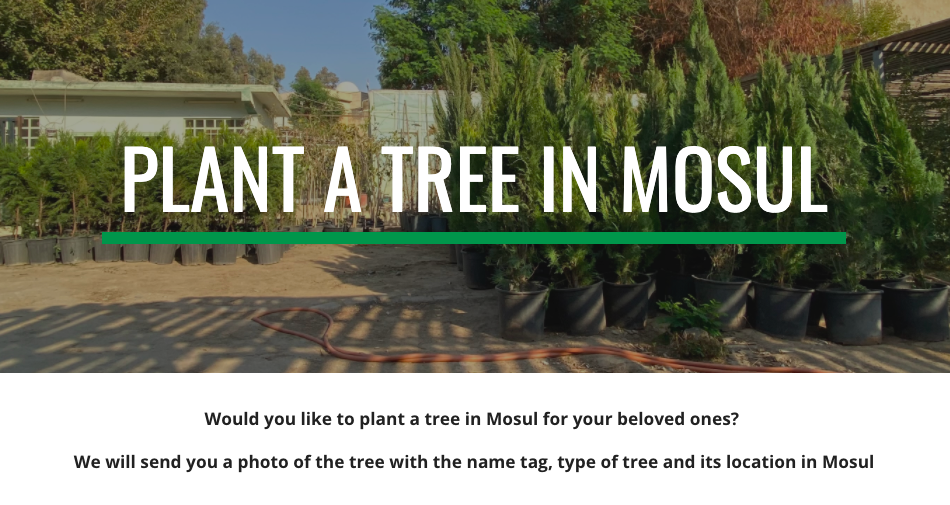'Life wins' - Dr Omar Mohammed / Mosul Eye
When ISIS captured Mosul in 2014, a young Mosuli historian – Dr Omar Mohammed – began writing a public blog under the pseudonym ‘Mosul Eye’. Throughout Mosul’s occupation, it became a vital source of information both for those within the city and for the wider world. As a historian, Dr Mohammed wanted to provide the people of Mosul and wider audiences with accurate accounts of events as they were unfolding in real time; but he also used the blog to preserve the names of victims and build up a reliable record for posterity, so that future generations could understand what had happened. His correction of fake news and exposure of atrocities meant that he and the blog were targeted by ISIS, but he persevered despite the risks, viewing his writing as a way to fight back.[i]
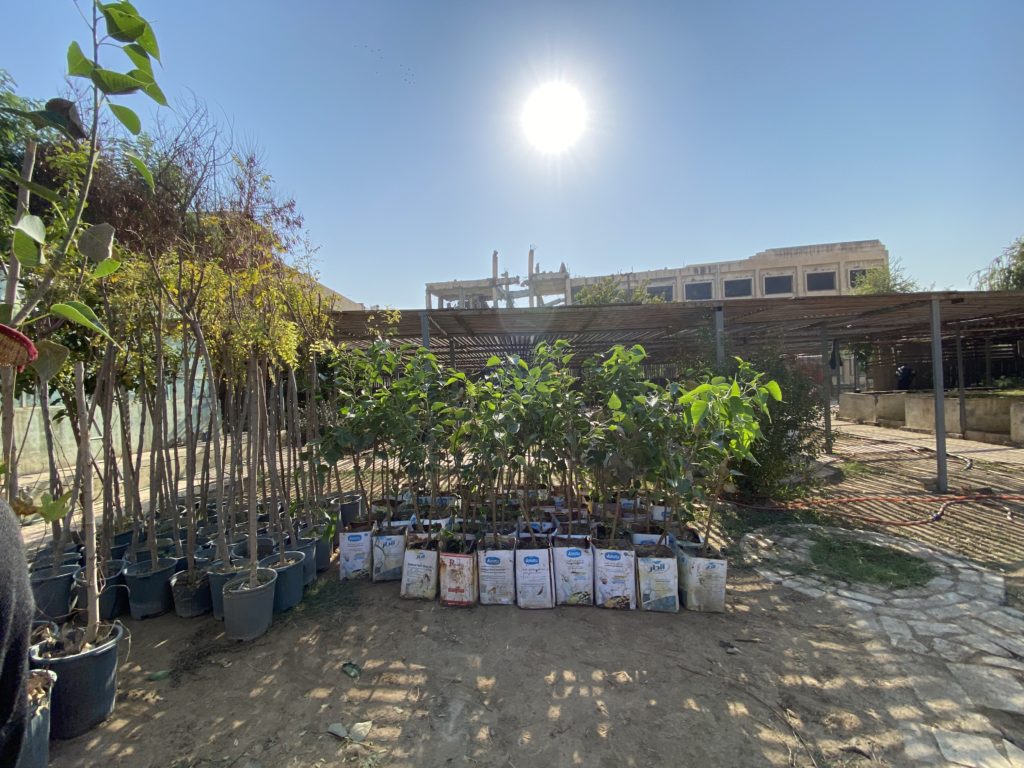
Over time, the ‘Mosul Eye’ blog became so well known that major news organisations turned to it to verify or flesh out their stories. Dr Mohammed was able to leverage the growing influence he had to help rescue people and families from the city and to collect books to help restock Mosul University’s library, destroyed in 2015. Since Mosul’s liberation, Dr Mohammed has used his platform to put Mosul on the global map in positive ways, developing a podcast, organising concerts and exhibitions, promoting cultural heritage and record-keeping projects, building bridges between Yazidi, Christian, Muslim and Jewish communities in the city, and kick-starting a major tree-planting programme – #GreenMosul – to help Mosulis visualise a greener, more peaceful future and to connect them to wider efforts to address climate change and sustainable living. With financial support from donors far and wide,[ii] the Mosul Eye Association launched the #GreenMosul Initiative in November 2021, to coincide with COP26. They have since planted over 5000 trees across many different public locations in and around Mosul, including at heritage sites in Old Mosul that are being rebuilt through UNESCO’s ‘Revive the Spirit of Mosul’ initiative.
Visualising Peace through Trees
Over the past year, I have lost count of the number of times I have heard or read about climate change as one of the likeliest sources of future armed conflict in many different parts of the world. I decided to feature the Mosul Eye Association’s #GreenMosul initiative in our Museum of Peace because it reminds us that peace-building and environmental care can nourish each other. More than that, they are co-dependent on each other.[iii] This is an empowering and optimistic message: the planting of hope where worry and despair can take root, the nurturing of green shoots both literally and metaphorically.
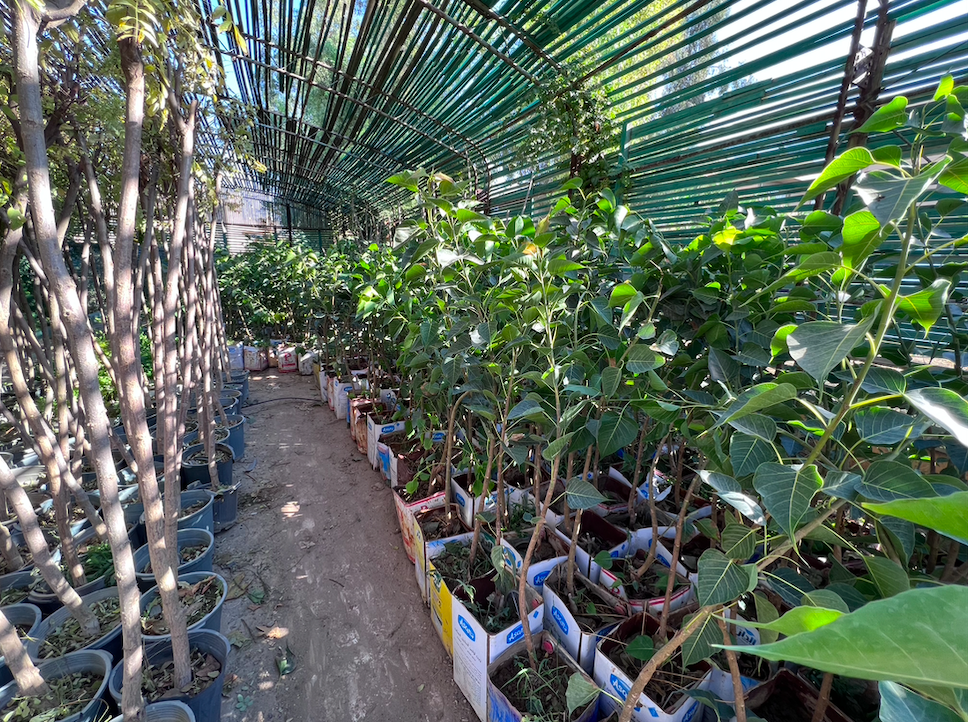
Grassroots. Our research into peace has brought to the fore the importance of ‘bottom-up’ or ‘grassroots’ peace-building.[iv] Often more sustainable than ‘top-down’ peace-processes, that are designed and implemented by national or international powers, ‘grassroots’ approaches ideally involve a wide range of local voices (including women and minority groups); they help members of the community to find common ground and shared purpose; and they empower ordinary citizens to become activists and drive forward the changes they want to see. The #GreenMosul initiative works in precisely this way. As they explain on their website:
Mosul City and the surrounding areas are suffering many interconnected environmental problems including air and noise pollution, desertification, rain-induced floods, and traffic density among many others. These new green spaces thus seek to improve air quality, provide cooling and shade, reduce the likelihood of flooding, calm traffic, support the community’s overall well-being and provide a habitat for local wildlife.
In addition to the environmental impact, the Green Mosul initiative seeks to be a catalyst for civil society as teams of volunteers from diverse social, institutional and community organizations in the city and its surroundings will plant the trees. This will create new synergies and opportunities for Iraqi youth engagement around these topics, in relation to the larger international discussion of climate action and the 26th United Nations Climate Change conference COP26 held in Glasgow, Scotland. According to Omar Mohammed, historian and founder of the Mosul Eye Association, “The Green Mosul initiative is a project for the community where civil activists are leading the way.”
Although it is in some ways a very local initiative, the #GreenMosul project is doing important bridge-building across the world. Organisations and ordinary people from many different countries have donated trees, contributing at once to Mosul’s recovery and to global efforts to address climate change. World leaders like President Macron of France and Pope Francis have visited Mosul at Dr Mohammed’s invitation. And Dr Mohammed himself continues to use his blog and social media to draw connections between Mosul and other conflict-affected places. Since February 2022, he has reached out with many messages of support to people in Ukraine. He has offered advice to Ukrainian historians about preserving records and documenting conflict. He has amplified the work of the Shadows Project, a group of activists using social media to ‘preserve, protect and popularize Ukrainian culture’ – and by extension Ukrainian identity – in the face of many threats.[v] And he tweets important messages of hope, celebrating the many ways in which ‘life wins’ despite the trauma and destruction that conflict brings..[vi]
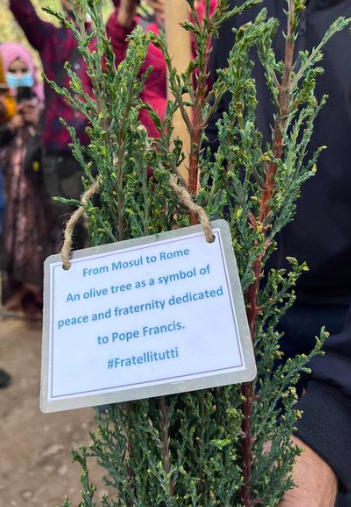
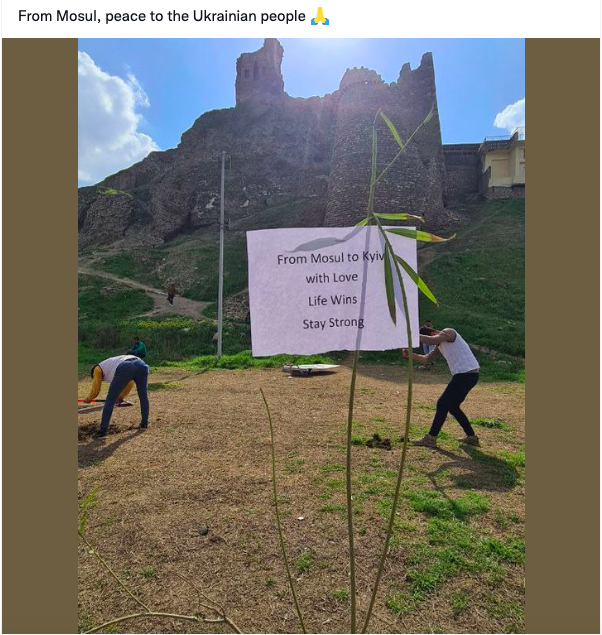
The #GreenMosul initiative gets us thinking afresh about concrete forms of peace-building, from the physical rebuilding of a city and its sustainable development to the bridging of societal divisions and the nurturing of new generations of civic activists. It reminds us how interconnected different aspects of post-conflict recovery are (or should be), with the restoration of cultural heritage going hand-in-hand with new growth, and with local initiatives connecting to global movements.
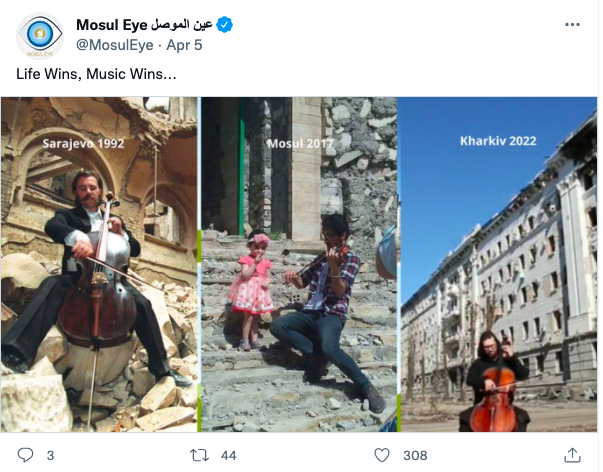
It also gets us thinking about the power that social media can play in rebuilding hope and helping us to visualise a future beyond conflict. During the dark days of Mosul’s occupation, the Mosul Eye blog helped locals and the wider world to grasp the profound and sometimes unseen destruction that war brings. But Dr Mohammed has also used the tools of the digital age to catalyse optimism and identify ways in which all of us, near and far, can work for peace. His voice in the Twittersphere has not only helped to put Mosul on the map. On a daily basis, it shares messages of hope for life after conflict and infuses a platform so often dominated by conflict with care, empathy and empowering ways of visualising peace.
What do you think?
- What connections do you see between peace and the environment?
- What connections do you see between peace and cultural heritage?
- Does the #GreenMosul Initiative get you thinking about post-conflict recovery, peace-building or peace in new ways?
- What role do you think social media can play in post-conflict recovery and peace-building?
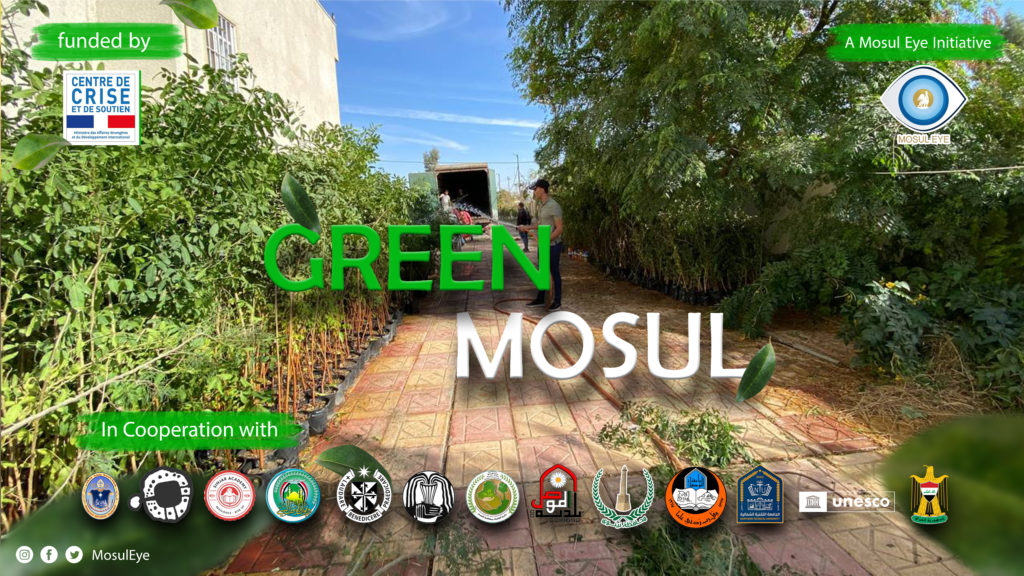
If you want to read more about how ‘life wins’ after conflict and get regular updates on the #GreenMosul initiative, you can follow @MosulEye on social media. You might even consider playing an active role in this peace-building project by paying for a tree of your own to be planted!
If you enjoyed this item in our museum…
You might also like ‘Hope in a Jar’, ‘Unlearning War’, ‘Of Ordinary Things‘, ‘Pockets of Peace in Ukraine: care for nature‘ and other items with the tag ‘environmentalism‘.
Alice König (April 2022)
[i] Omar Mohammed shared his story with the Visualising War project on this podcast: https://www.buzzsprout.com/1717787/9181282.
[ii] In particular, from the French Ministry for Europe and Foreign Affairs’ Le Centre de crise et de soutien. Many individuals have also donated trees, including the Visualising War project. If you would like to make a donation, you can do so here: https://sites.google.com/mosul-eye.org/greenmosul/plant-a-tree-in-mosul?authuser=0.
[iii] See, for example: https://www.iucn.org/commissions/commission-environmental-economic-and-social-policy/our-work/environment-and-peace; also https://www.sipri.org/research/peace-and-development/environment-peace; and https://www.peaceinsight.org/en/articles/environment-peace/?location=&theme=environment.
[iv] You can read about some examples of ‘grassroots’ peacebuilding here: https://www.peaceinsight.org/en/articles/inclusive-peacebuilding-colombia-how-can-grassroots-organizations-contribute-national-peace-process/?location=colombia&theme=ddr; also https://link.springer.com/chapter/10.1007/978-3-030-46636-7_8; and https://www.usip.org/publications/2021/07/people-people-examining-grassroots-peacebuilding-efforts-between-israelis-and.
[v] You can follow the Shadows Project on both Twitter and Instagram. As well as preserving records of Ukrainian art and culture, they have launched a mini project called Letters from Ukraine, whereby ordinary Ukrainians anywhere in the world can document their hopes and fears as the conflict goes on.
[vi] One recurring theme of Dr Mohammed’s tweets is the return of music to Mosul, something he has worked hard to facilitate. You can read about two examples here and here.
